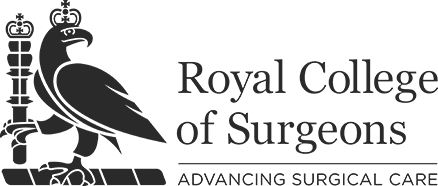Summary
Changes from April 2025 include:
- An increase in Employer’s National Insurance Contributions to 15% with the starting threshold salary, at which this starts, reduced to £5,000.
- The basic and intermediate rate income tax thresholds in Scotland have been slightly increased
- The Capital Gains Tax (“CGT”) Rates were increased on the day of the October 2024 Budget to 18% for Basic Rate Taxpayers and 24% for higher and additional higher rate taxpayers. The Business Asset Disposal Relief CGT rate was increased from 10% to 14% on 6 April 2025 and will increase again to 18% on 6 April 2026.
- Temporary reductions in residential Stamp Duty Land Tax have expired
- Electric vehicles must now pay Vehicle Excise Duty and new electric vehicles bought for more than £40,000 will be caught by the “expensive car supplement” for the first time.
- The long-standing “non dom” tax rules for non-UK domiciled individuals are abolished and replaced with a new residence-based regime.
- The £20,000 ISA and £9,000 Junior ISA allowances are refreshed for the new tax year as are the annual Capital Gains Tax and Inheritance Tax exemptions (worth £3,000 each)
Intro
With Labour’s first Budget on 31 October 2024 and a Scottish Government Budget in December 2024 there have been multiple changes made to the UK tax system for the tax year ended 5 April 2026. Some other changes had been announced prior to this but come into effect this year. And as always, a new tax year means new allowances, such as the £20,000 ISA allowance, are refreshed. In this blog, Ed runs through some of the key changes that took place on 6 April 2025 when the new tax year came in.
Income Tax
Not a huge amount has changed regarding income tax for most of us but in Scotland there were some minor changes to the lowest income bands. On 4 December 2024 the SNP unveiled its 2024 Budget which increased the two lowest income tax thresholds (the basic and intermediate rate thresholds) by 3.5% meaning more income will be taxed at 19% and 20%. The other thresholds will be frozen as will the six income tax rates.
For the rest of the UK there has been no change to any income tax rates or thresholds. And for the whole of the UK the personal allowance remains frozen at £12,570 until at least 6 April 2028. Therefore, fiscal drag, where pay rises pull people into higher income tax thresholds, remains a problem for a lot of people in the UK.
National Insurance Contributions (“NIC”)
For the first time in a while there have been no changes to either Class 1 Primary NIC (payable on employee salaries) nor Class 4 NIC (payable on the taxable profits of the self-employed). The big change is that NIC for employers on the salaries they pay (Class 1 Secondary NIC) will increase from 13.8% to 15% from April 2025. In addition to this the threshold at which businesses start paying National Insurance on a workers’ earnings will be lowered from £9,100 to £5,000. While this may not impact employed doctors and staff it will by its nature affect employers including GP Practices. The cost of employing someone on a salary of £9,100 will increase by £615 a year while someone on a salary of, for example, £30,000 will cost an extra £865. While the Government tried to soften this change via what is known as the Employment Allowance, GP practices are not able to utilise this.
Added to the mix, from April 2025, the national living wage will increase by 6.7% and the national minimum wage by as much as 18% depending on the category of the worker.
Capital Gains Tax (“CGT”)
The CGT rates were increased in the October 2024 Budget and were changed that very day (to avoid people disposing of assets before the tax year end and paying less CGT). The rates of CGT since then have been 18% for basic rate taxpayers and 24% for higher/additional higher rate taxpayers. There is one difference from 6 April 2025: those who own their own businesses and qualify are able to take advantage of a lower CGT rate on the first £1 million of capital gains when they dispose of that business – this lower rate was 10% but is increased to 14% on 6 April 2025 and will increase again to 18% on 6 April 2026.
Stamp Duty Land Tax (“SDLT”)
In 2022 the Conservative government, aiming to support the housing market, announced temporary reductions in residential SDLT which would last until 31 March 2025. The current government have not extended these reductions and therefore, from 1 April 2025:
- the residential nil rate band will be £125,000 (down from £250,000)
- the first-time buyers’ relief nil rate band will be £300,000 (down from £425,000); and
- the maximum transaction value for first-time buyers’ relief will be £500,000 (down from £625,000).
Electric Cars
Bad news for those who own an electric car or buy one from April 2025: for the first time Vehicle Excise Duty will be payable (at £195 per year for most electric vehicles). The “expensive car supplement” will also apply for the first time for electric cars bought after 1 April 2025 that cost over £40,000
Non-UK domiciled individuals
From 6 April 2025, the long-standing “non dom” tax rules for non-UK domiciled individuals are abolished and replaced with a new residence-based regime.
Under the new regime there is no UK tax on foreign income and gains for new arrivals to the UK for the first four years of UK tax residence as long as they have not been UK tax resident in any of the 10 years before they arrived in the UK.
Furnished Holiday Lettings
This may not affect many of us but for completeness the Furnished Holiday Lettings tax rules have been abolished from 1 April 2025. A Furnished Holiday Let was a rental property that met various criteria such as being furnished (funnily enough) and being made available to let as holiday accommodation for more than 210 days in the year and actually let more than 105 days in the year. If the criteria were met there was various beneficial tax advantages that have now ended. These included deducting mortgage interest against taxable income, claiming capital allowances on some capital expenditure and Business Asset Disposal Relief (see above – a lower rate of Capital Gains Tax on the first £1 million of gains). From 1 April 2025, the usual UK or overseas property business rules apply as appropriate.
Tax return information requirements
From 6 April 2025, there are a couple of new mandatory tax return requirements. The first may apply to those doctors who trade via a limited company e.g. for their private work if this company is a “close company”. Most private companies in the UK are “close” because the definition of a close company is one which is resident in the UK and controlled by either five or fewer shareholders or any number of directors who are also shareholders. It used to be a voluntary requirement for taxpayers to indicate if they were a director of a close company but now this is mandatory along with entering on the tax return:
- the name and company number of the close company,
- the value of dividends received during the tax year
- their percentage shareholding in the company during the year.
The other main change is that taxpayers who start or cease to trade must now report the date of commencement/cessation on their tax return for that year. Again, this had previously been voluntary.
On another note, the interest rate charged by HMRC for late payments of most taxes and duties will increase from 7% to 8.5% from 6 April 2025
And Don’t Forget that Allowances are Refreshed…
A new tax year means that all allowances are refreshed including:
- The £20,000 ISA allowance of which up to £4,000 can be put into a Lifetime ISA, if eligible.
- The £9,000 Junior ISA threshold per child
- The £3,000 Capital Gains Tax Annual Exemption
- The £3,000 Inheritance Tax Annual Exemption
- The £500 Dividend Allowance
… And You Can Claim for Your 2024/25 Employment Expenses if you haven’t already:
You can download the new guide – which will take you step by step through the process for free – here: https://www.medicsmoney.co.uk/free-guide/








